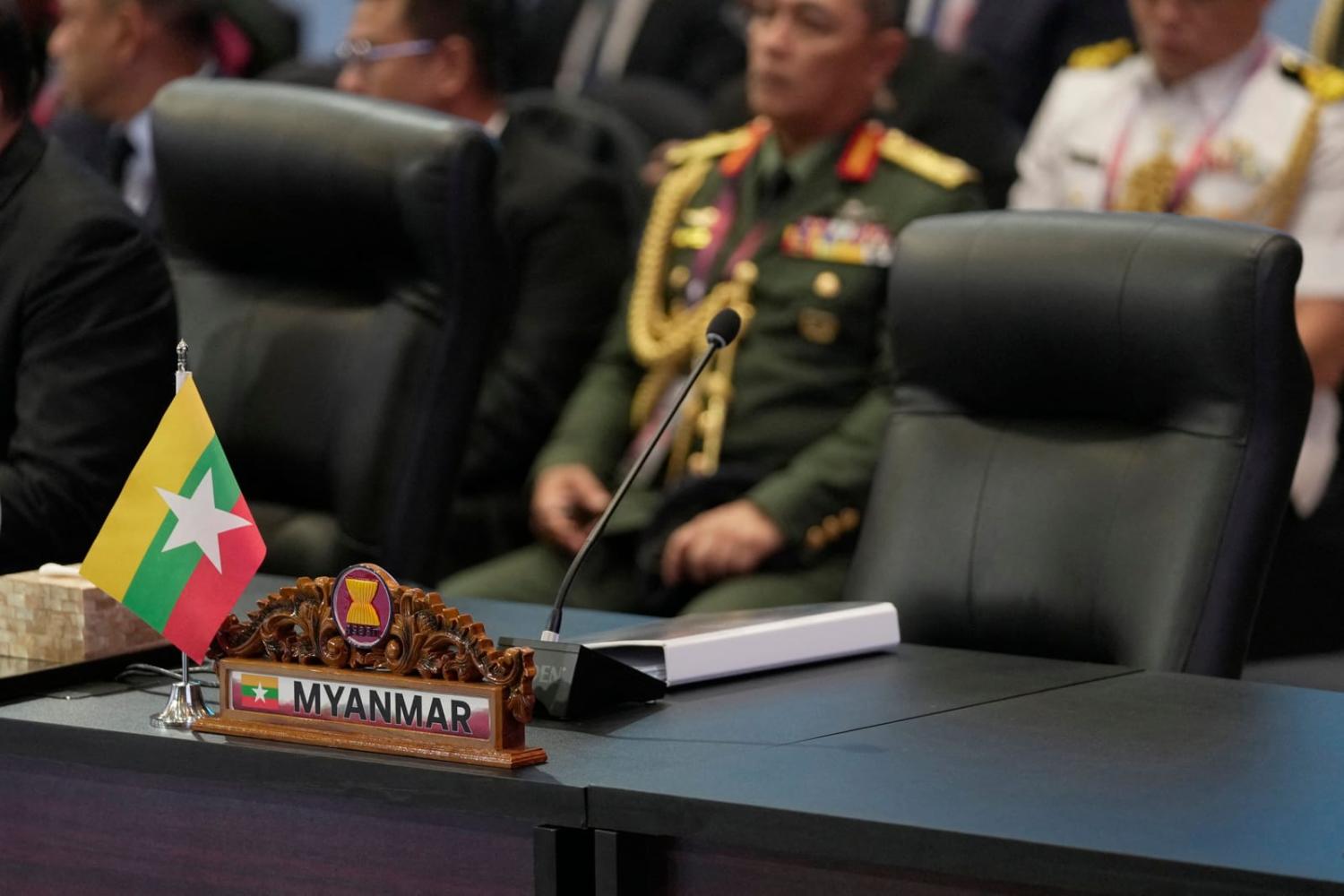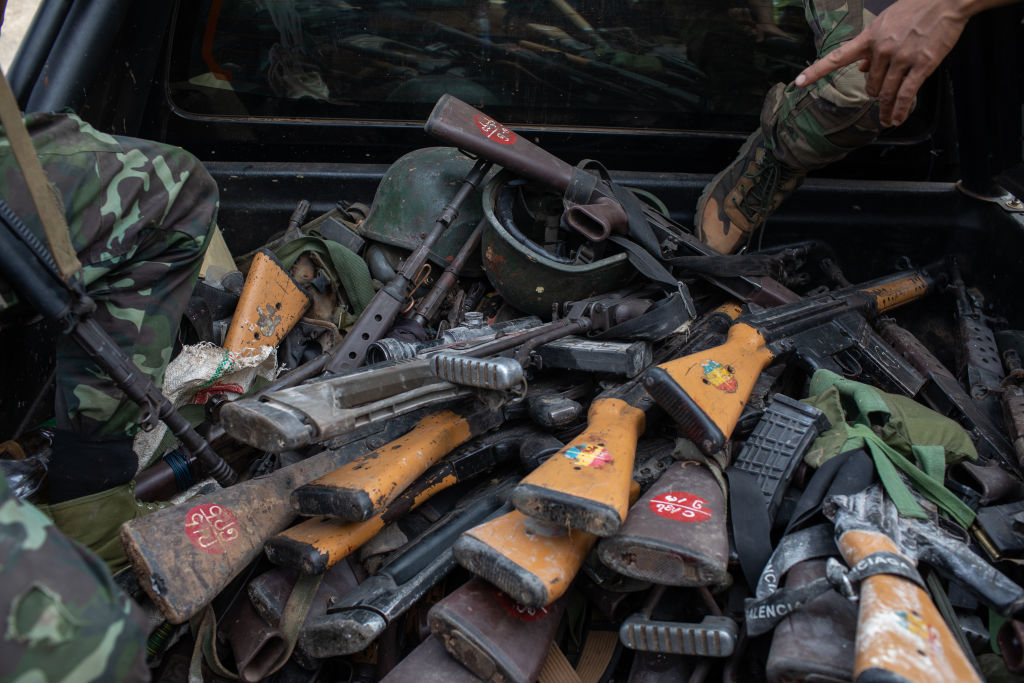The rebels appear to hold all the initiative on the battlefield.

The latest phase of military conflict in Myanmar pitting rebel forces against the Myanmar military, better known as the Tatmadaw, may herald a new political and security landscape in the war-torn Southeast Asian country.
Since October, three ethnic armed organisations under the banner of the Three Brotherhood Alliance have launched a coordinated offensive against the ruling military junta. Codenamed Operation 1027, the campaign has included the Ta’ang National Liberation Army, the Myanmar National Democratic Alliance Army, and the Arakan Army, targeting Tatmadaw’s controlled areas and military outposts.
The success of the coordinated offensive has drawn support from other rebel forces among the milieu of local groups opposed to the regime, with the People’s Defence Force and the Communist Party of Burma’s People’s Liberation Army stepping up their fight against the Tatmadaw. In the past month, different rebel forces have overrun junta outposts and captured large swathes of land, including several towns and border crossings with India and China.
But two main factors will answer the question about how this latest fighting might shape the outcome of the battle against the junta: first, whether the rebel forces can maintain the pace of the offensive; second, how effectively the Tatmadaw can regroup with a counter-offensive.
There are several indicators suggesting that the rebels hold advantages on the battlefield. Given the junta’s brutality, the rebels can expect to draw on popular support. The local population is critical in any insurgency campaign, as it can lead to tangible support such as intelligence, materials, and personnel.
Since the February 2021 coup, the junta has imprisoned nearly 20,000 people and caused nearly one million people to be internally displaced. The junta’s four-cuts strategy to stifle opposition terrorises the civilian population. To maintain power, the junta has unleashed its air force to strike against civilian targets, so there is little love for the generals.
Furthermore, the rebel’s rapid success in capturing several Tatmadaw outposts has enabled them to access additional weapons and ammunition. The latest pictures and videos from social media indicate that rebel forces have also captured armoured vehicles and artillery pieces. These could be turned against the Tatmadaw in future offensives.

And the rebel forces have the initiative on the battlefield. The Tatmadaw has been forced to give up numerous positions and retreat across multiple fronts. Having the initiative is critical – military theory argues that freedom of action forces the enemy to conform to one’s objective and pace.
But theory can wilt when confronted by reality. Can the Tatmadaw regain the initiative to organise an effective defence, followed by counterattacks to recapture lost territory? For now, this seems an impossible task.
The Tatmadaw appears overstretched. Besides engaging the rebels, the junta has to contend with anti-junta forces in areas under its control, demonstrated by the reported assassination of one of the junta’s cronies in Yangon. A recent study estimated the strength of the Tatmadaw to be about 150,000 personnel, with 70,000 of them in combat units. To put the figures into context, the United States deployed nearly half-a-million troops in Vietnam at the height of the Vietnam war. Even allowing that the two conflicts are not perfect historical comparisons, it helps to illustrate the scale of the junta’s challenge. Considering that Myanmar is geographically larger than Vietnam and dotted by thick jungles and mountains, the Tatmadaw is struggling against a simultaneous fight against rebel forces throughout the country.
Low morale is also evident. There are reports of Tatmadaw units surrendering without fighting or offering only feeble resistance before giving up. In other instances, Tatmadaw troops abandoned their posts and fled to neighbouring India. Recruitment to replenish losses is also a significant problem.
As the Tatmadaw losses mount, it may retreat to major population centres and military bases. The rebel forces, controlling much of the countryside, will likely be able to isolate Tatmadaw units defending these areas. The junta may use its airpower to push back the rebels, but airpower alone is insufficient to win an insurgency. Again, the Vietnam experience is illustrative – the United States dropped more than 5 million tonnes of bombs on Vietnam but still lost the war.
The junta could be staring at defeat should the rebel push continue. Being compelled to negotiate for a peaceful power transfer is far preferable to a drawn-out fight only to be overthrown. Myanmar has known bloodshed enough. The country deserves a chance for democracy to flourish.
